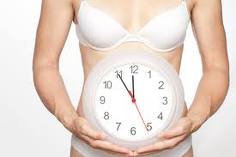When a girl is born, she already has all of the eggs she will ever have. Throughout the course of a woman’s lifetime, she will lose her eggs constantly until menopause, when no more eggs remain. Unfortunately, no reliable tests currently exist that can accurately gauge how many eggs are left and how viable or healthy those eggs may be.
What Is Ovarian Reserve?
If during the course of your fertility testing and treatment you hear the phrase “ovarian reserve,” it often refers to the remaining supply of viable eggs that are left for making babies in the future. Basically, the ovarian reserve is a woman’s fertility potential.
Low ovarian response can also be referred to as low ovarian reserve or perimenopause. Pregnancy rates and fertility chances are directly dependent on the age of the female, which often determines the number and quality of the eggs. This is why much higher pregnancy rates can be seen in younger women with good ovarian reserve, as compared to older women, who often have a lower reserve level.
AMH Testing
There has been a lot of research and discussion about women having specialized testing performed to assess what their current ovarian reserve level is and what their fertility chances are. This test is known as AMH (Anti-Mullerian Hormone). The AMH hormone is an important one and is produced only by the ovaries. Levels are generally higher in women who have a larger number of eggs still remaining. Other tests that have been used to help predict ovarian reserve include a Follicle Stimulating Hormone (FSH) test and an antral follicle count (AFC).
A woman’s age is perhaps the most important indicator of fertility and how likely it is that pregnancy can occur. As the female ages, her fertility levels will continue to steadily decline. It is also known that:
- The peak of female fertility is around 27 years of age and it continues to slowly yet steadily decline until around 35 years of age. After this stage of life, fertility rates drop off at a much more rapid rate until menopause sets in and biologically caused fertility is diagnosed.
- The success rate of getting pregnant is directly and closely related to female age. Younger girls have a much better chance of getting pregnant than older girls.
- The importance of age also applies to donors. However, the age of the recipient woman seems to have very little impact at all on the chances for successful pregnancy.
While all of these tests are helpful in giving a better picture of the condition of a woman’s ovaries, there is still much room for improvement and that is where the bulk of fertility testing and research is focused these days. Nevertheless, the message still is do not wait until it’s too late. Plan to have your babies before you are 35 because a female’s fertility sharply declines after this time.
You can call us on 1300 337 845 (1300 FERTILITY) or schedule a private fertility consultation to learn more.


